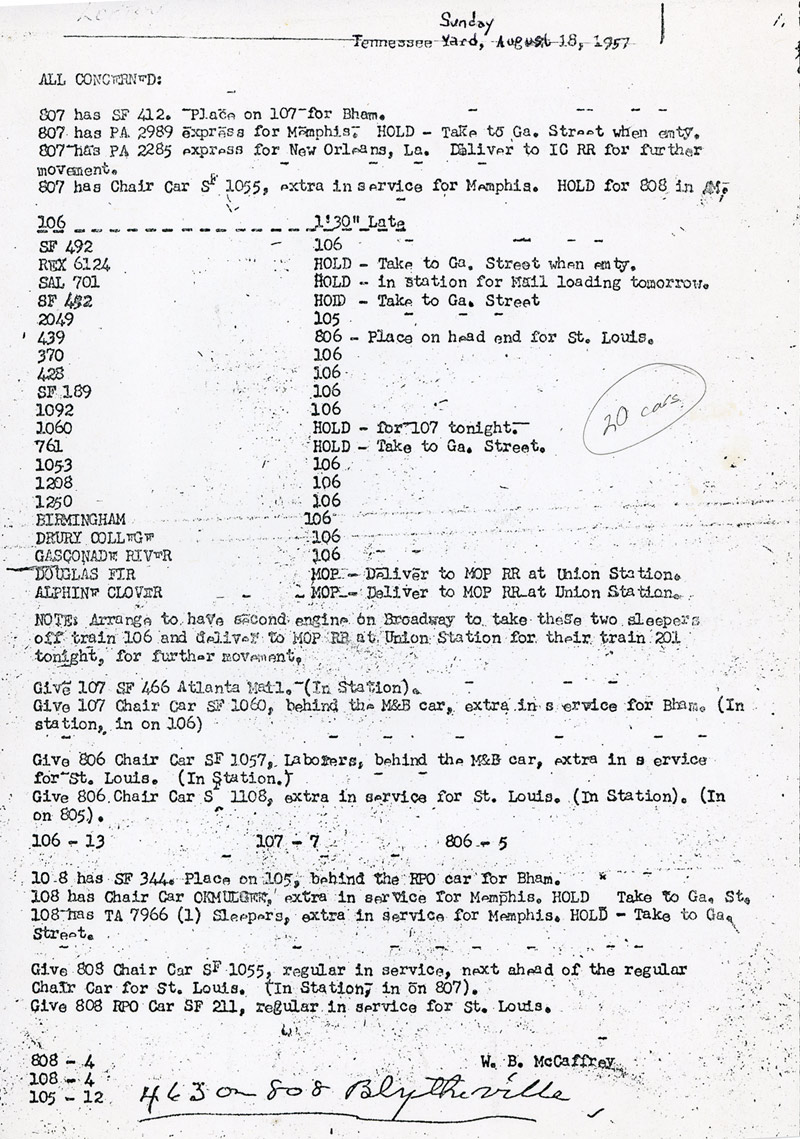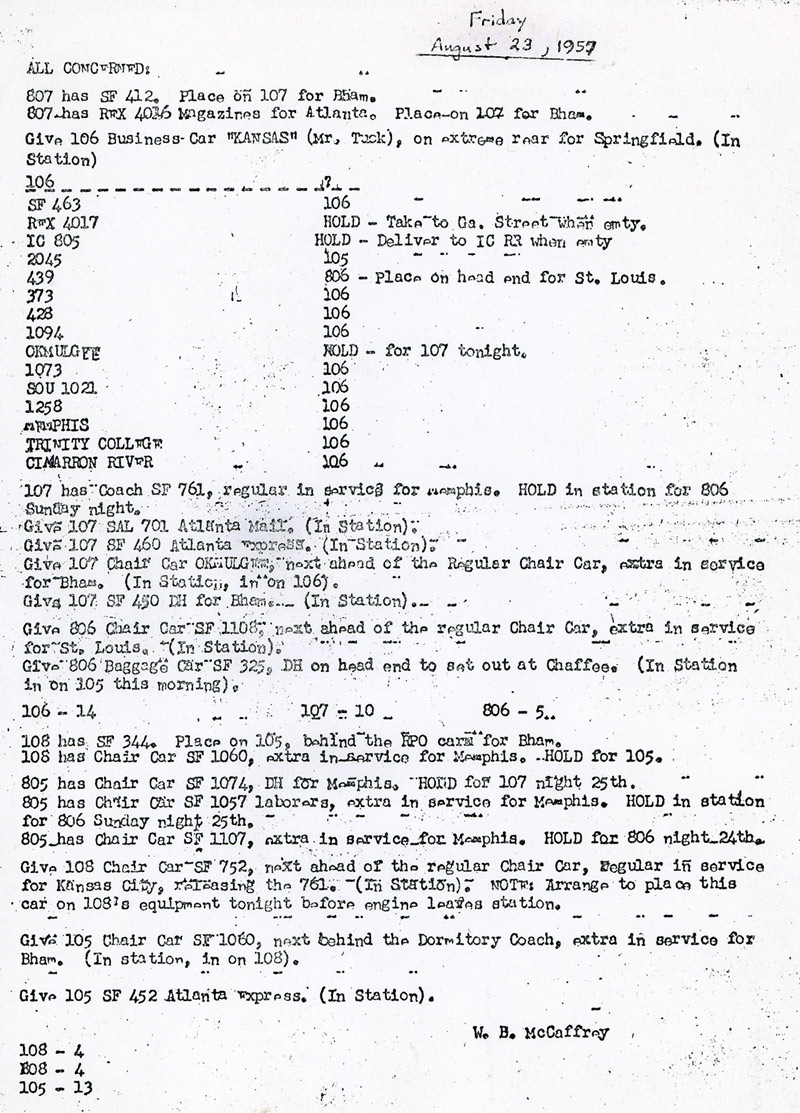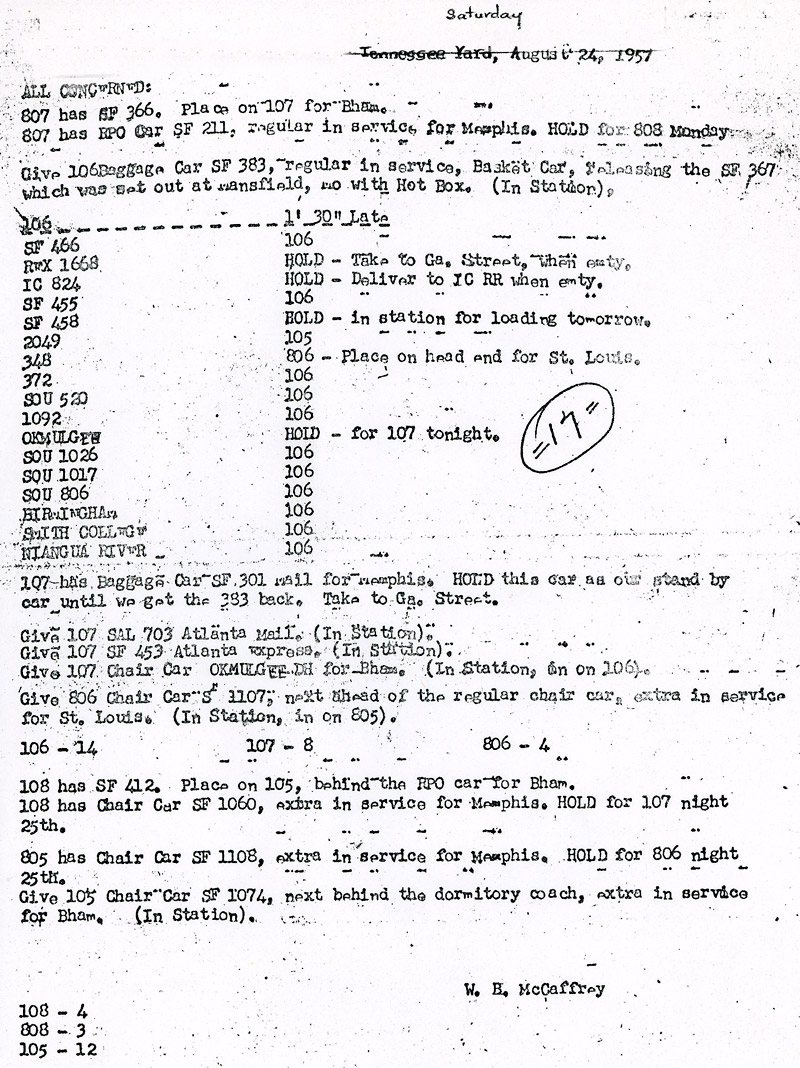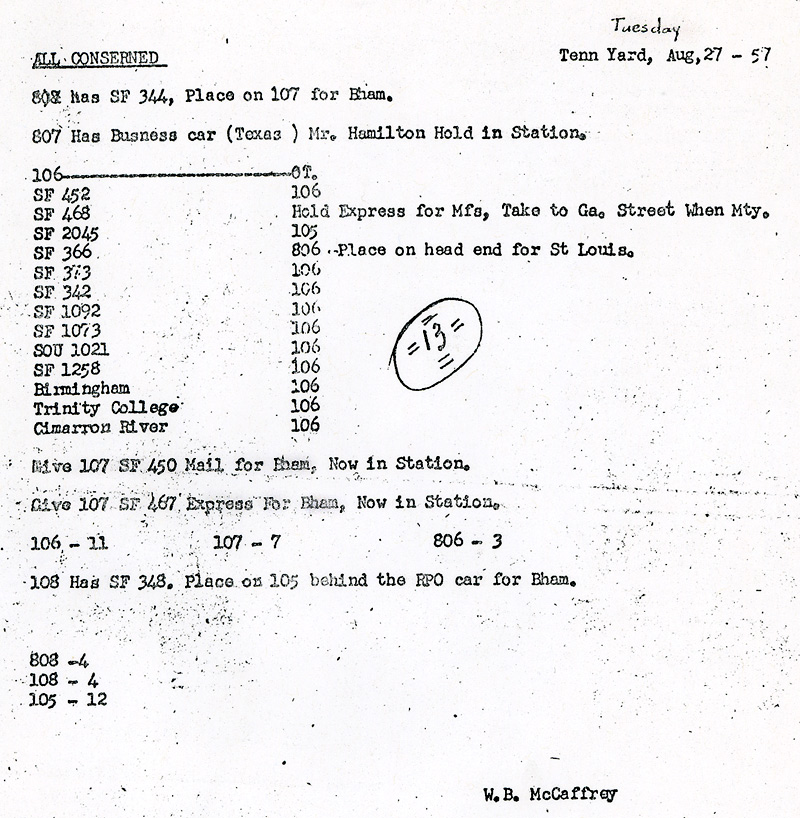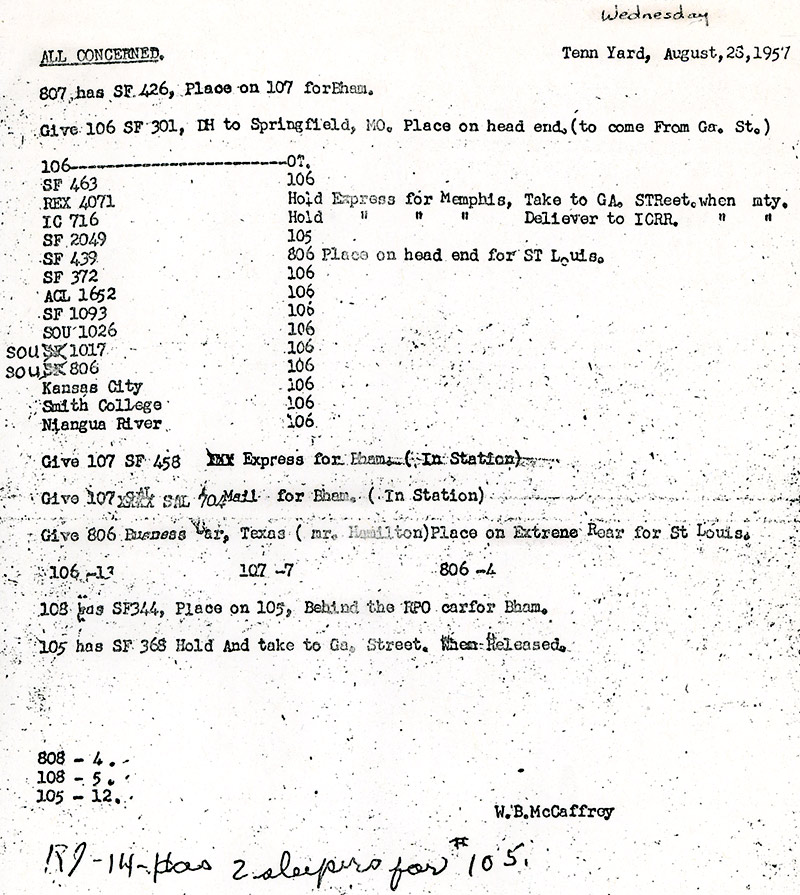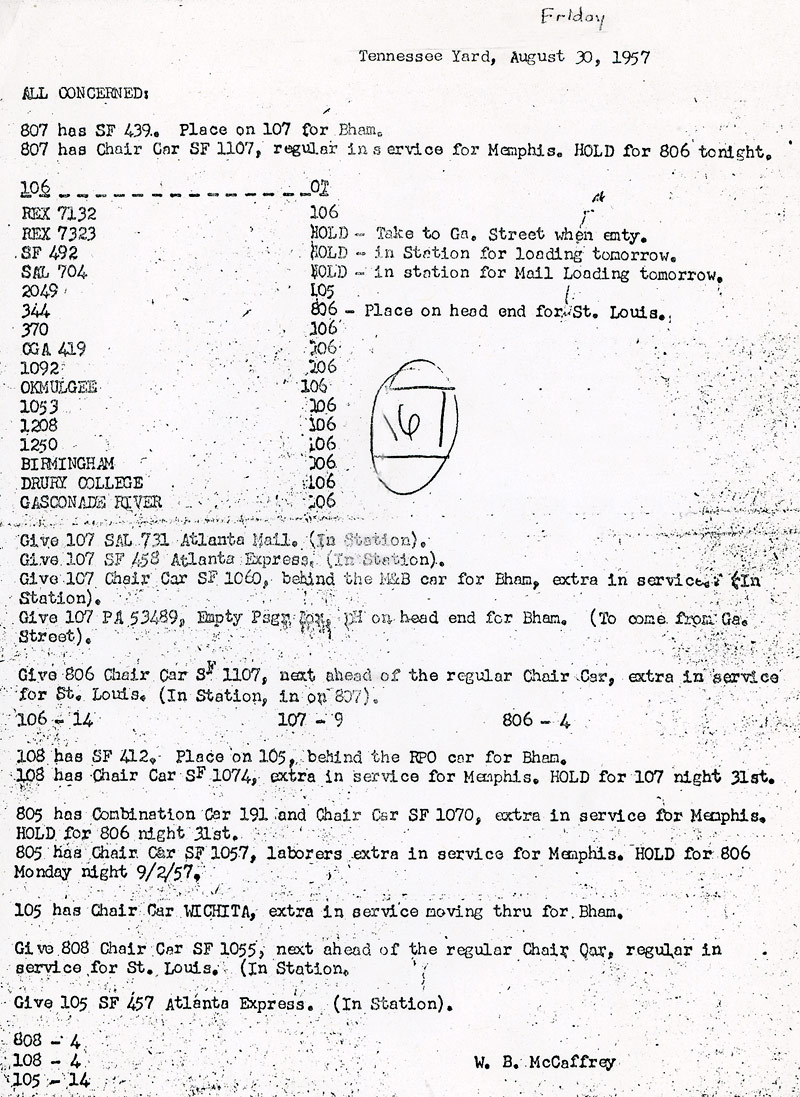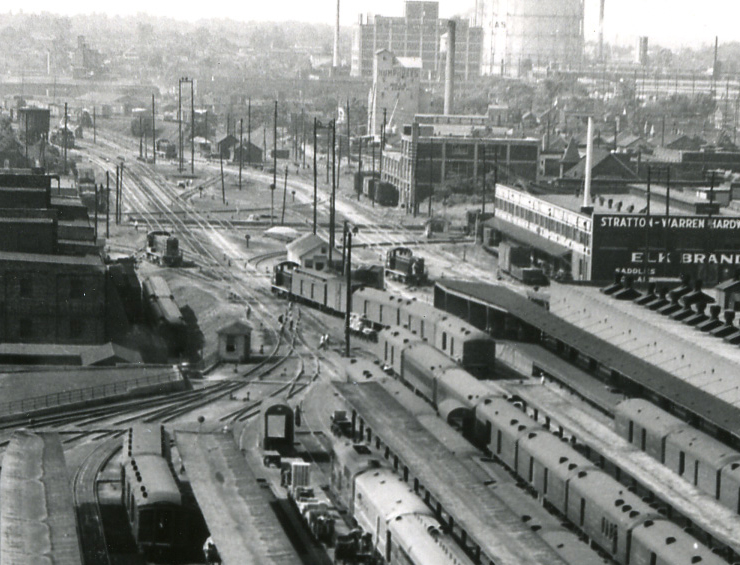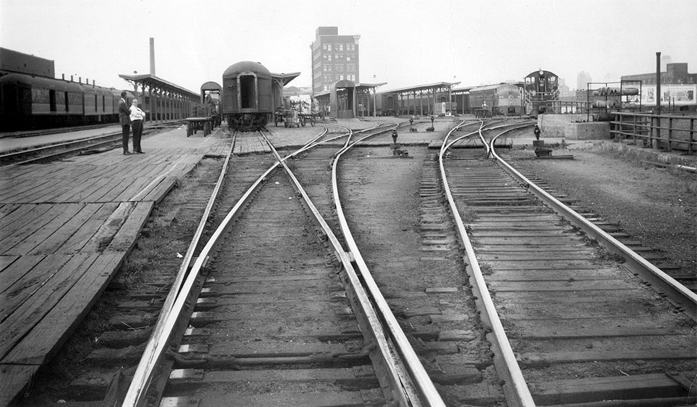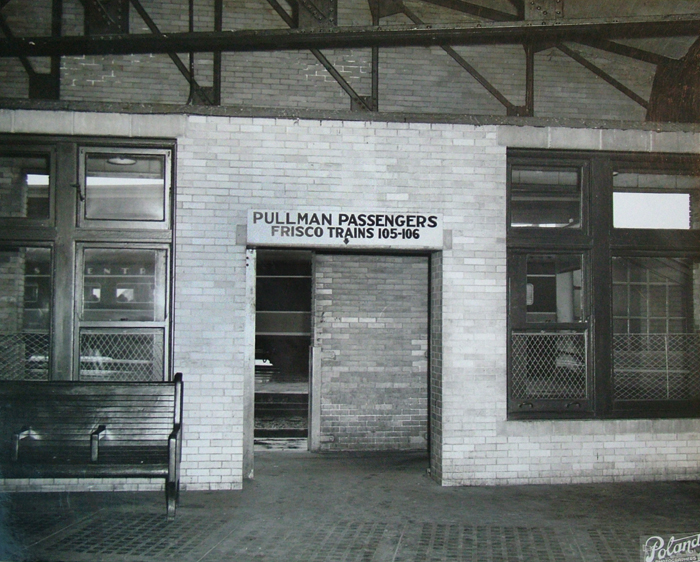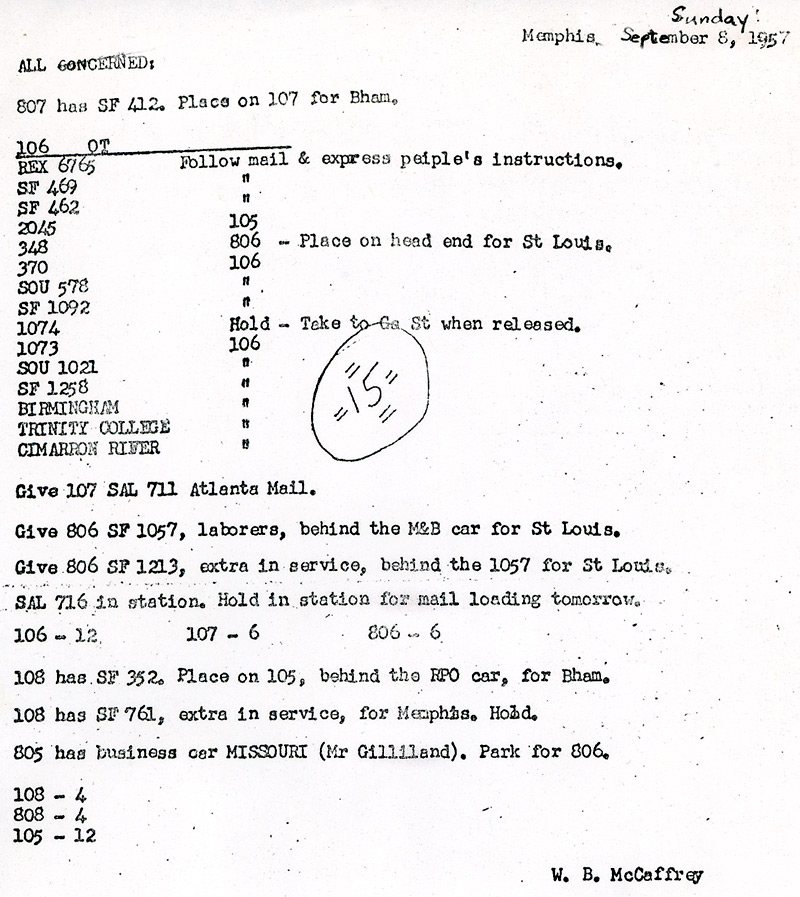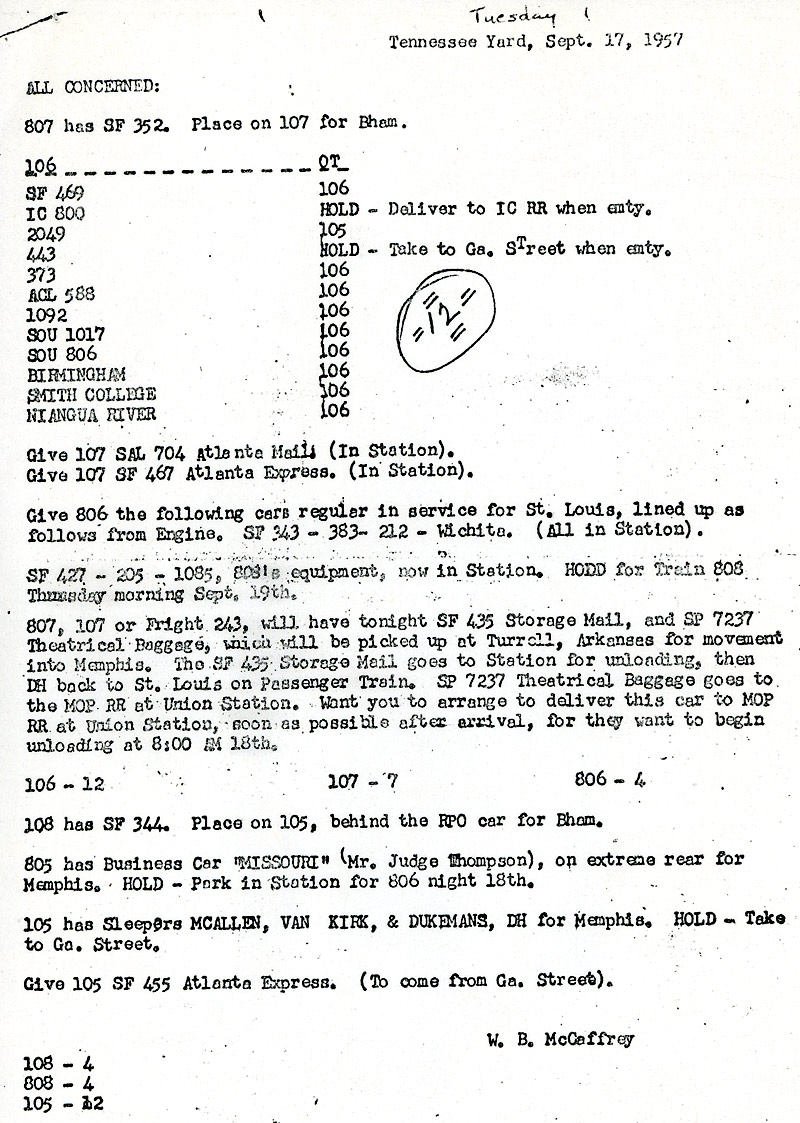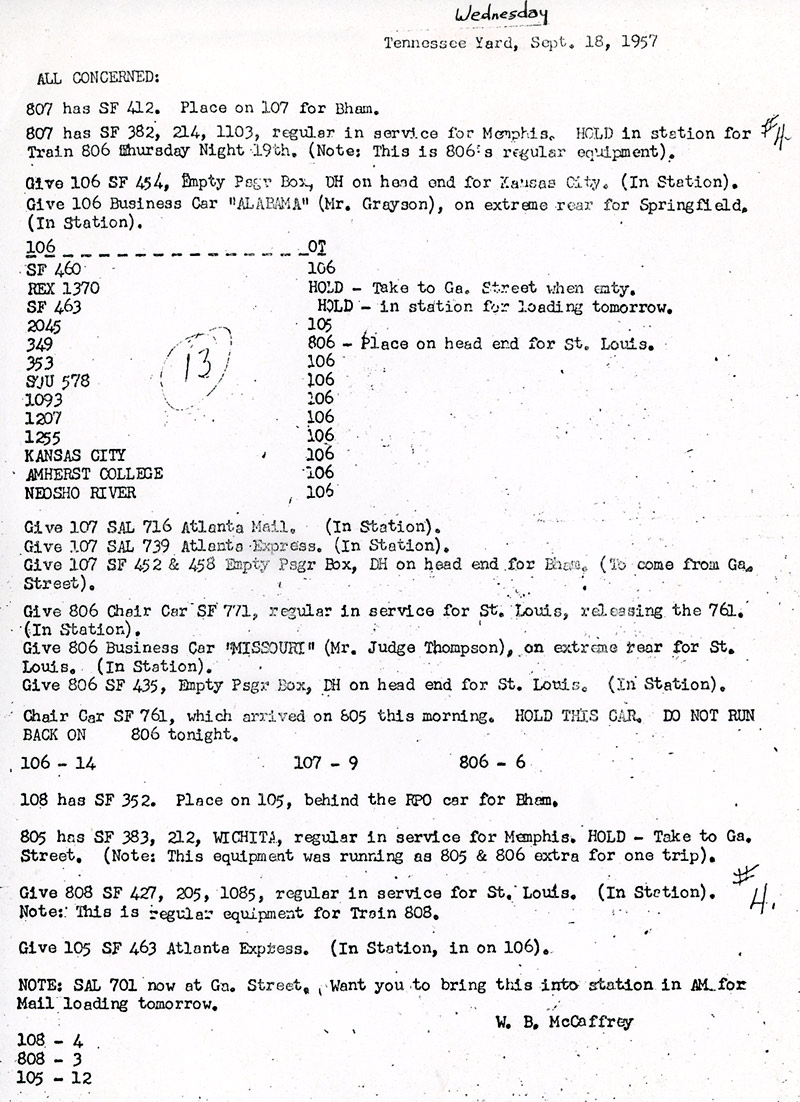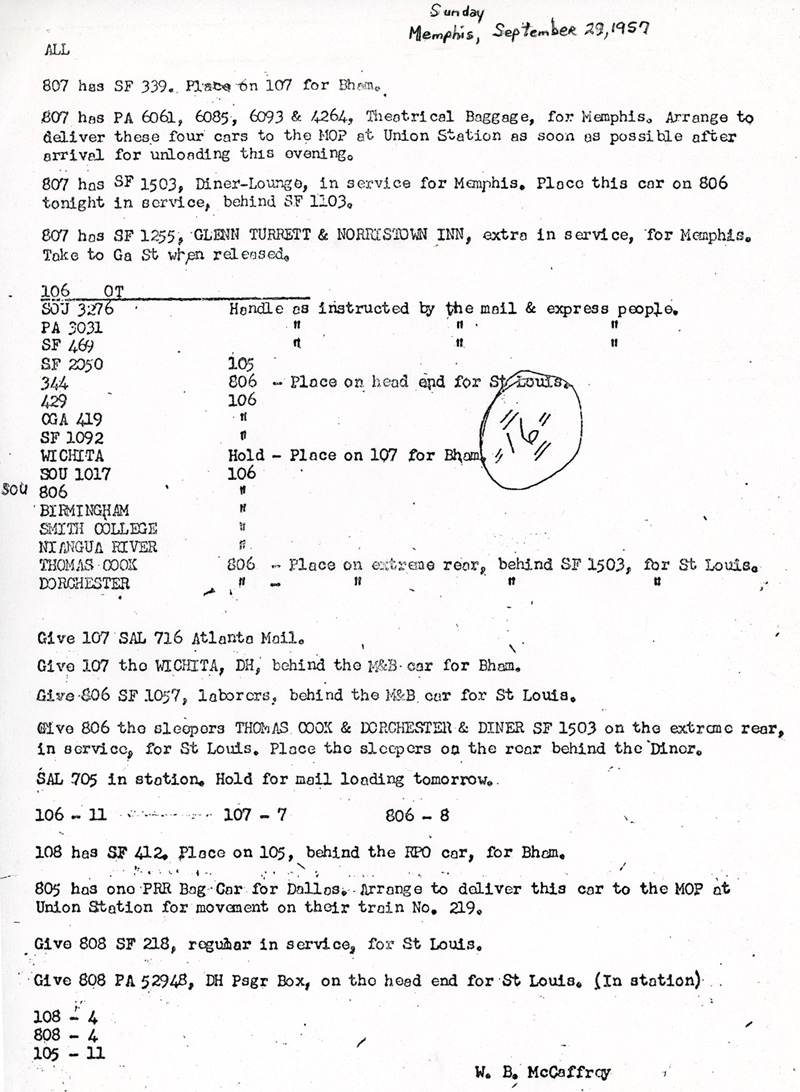Frisco Passenger Operations
Memphis Central Station
August-September 1957
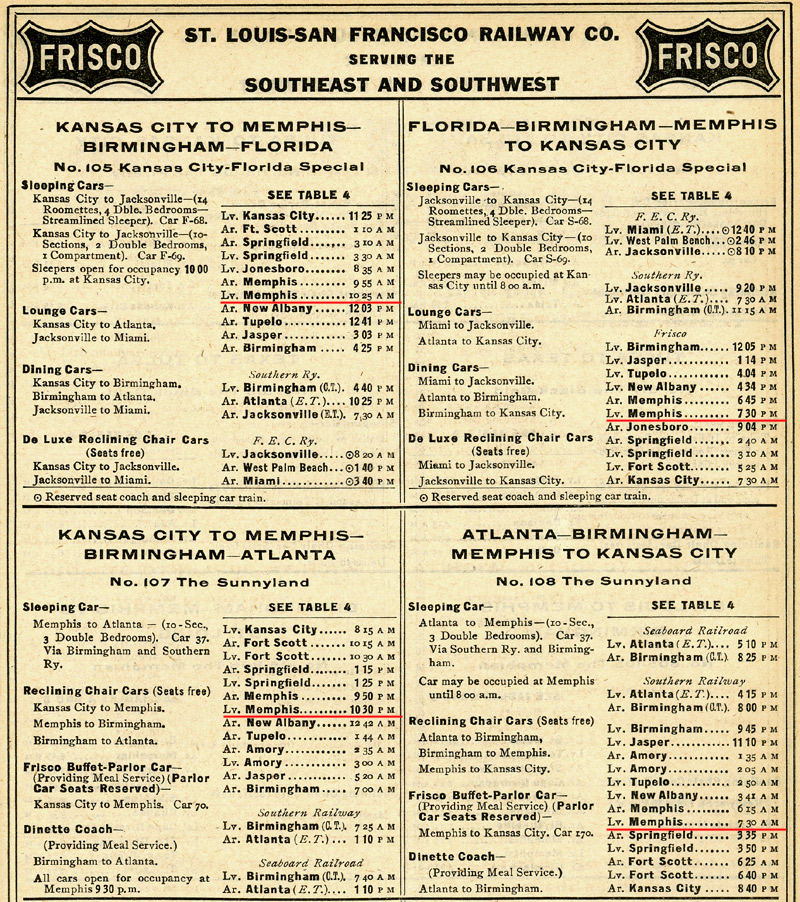
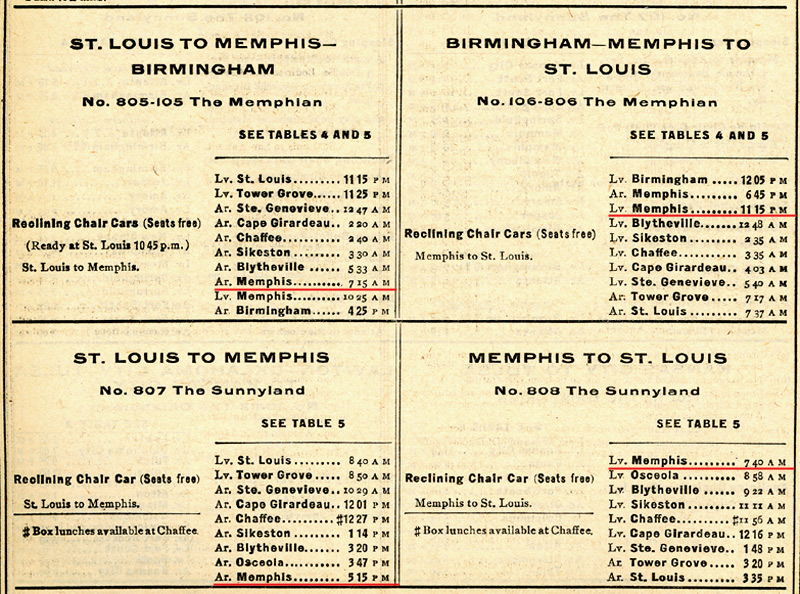
Official Guide of the Railways, September 1957
In 1957, Frisco's Memphis service included two daily schedules (the Kansas City-Florida Special and the Sunnyland) between Kansas City and Birmingham, and two daily schedules (the Memphian and the Sunnyland connection) between Memphis and St. Louis. Each of the through trains had scheduled dwell time at Memphis Central Station ranging from 30 to 75 minutes to allow for switching and servicing of the train. These passenger train switching chores were handled by Frisco switchers that were otherwise assigned to nearby yards or Broadway industrial areas. Even though trains 107-108 had the timetable appearance of a through train, a study of the consists published in the Official Guide reveals otherwise. No passenger carrying cars regularly operated through Memphis on these trains; separate equipment was used on the Kansas City-Memphis segment and on the Memphis-Birmingham segment. Passengers traveling through Memphis were required to make a transfer at Memphis, changing cars just as if they were changing trains. Some mail and express cars did operate through, as detailed below. Many car exchanges for Frisco trains at Central Station occurred on a regular basis, while others required special instructions. The office of W.B. McCaffrey, superintendent of Frisco's Memphis Terminal, issued a summary of passenger train operations for each day, specifying switching details at Central Station. Thanks to Ken McElreath, 14 pages of these summary sheets have been preserved and are presented in their original form. The detailed information from these sheets provides a more comprehensive historical understanding of Frisco passenger operations and related activity at Memphis. Routine Frisco switching each day included the following movements:
On a fairly regular basis, both passenger cars and head end cars would turn from inbound 106 to outbound 107, or from inbound 108 to outbound 105, because of heavier traffic loads on the Memphis-Birmingham segment. In either case, the layover time in Memphis was about three hours, assuming that both trains were operating on time. This short turn presented an extra challenge for coach cleaners or mail/express handlers. Some RPO routes (notably St. Louis & Memphis) did not operate on Sunday; the RPO car was often removed from the consist of inbound Saturday trains and stored until Monday departures. Although passenger cars were generally interchanged with the Southern Railway at Birmingham for movement to Atlanta or Florida, most express contracts were held by the Seaboard Air Line. At Birmingham, most head-end traffic was interchanged to the Seaboard rather than the Southern, thus the frequent appearance of SAL baggage cars in Memphis. Some Frisco car movements did not require action by the station switching crews, and do not appear on the documents below. For example, neither the Memphis-Atlanta Pullman nor the Kansas City-Memphis parlor-buffet cars on trains 107-108 appear in the switching instructions. When train 108 arrived in Memphis at 6:15am, the train was backed into one of the Memphis Central Station stub tracks. The Atlanta Pullman on the rear was kept open for occupancy until 8:00am, and the Pullman and coaches then remained on this track -- untouched by switching crews -- until time for departure of train 107 at 10:30pm. Two units operated between Memphis and Birmingham on 107-108, but only one unit between Memphis and Kansas City. When E-units were assigned to this train, the lead unit would be set off to continue on outbound 108 to Kansas City. The trailing unit was then run around the wye and became the unit used by train 808 to St. Louis. (With Frisco E-units there were no MU connections on the front of the unit to allow an "elephant style" of operation.) A similar arrangement prevailed after the arrival of 107 from Kansas City, with the passenger cars sitting on one of the station stub tracks from 10:30pm until 7:30am departure of outbound 108 the following morning. Part of the duties of the Frisco's afternoon "Depot job" switch engine, based out of nearby Georgia Street Yard, was to switch inbound 107 from Kansas City. Frisco trains 107-108, 805-806, 807-808 all used stub tracks 1-5 at Central Station, but trains 105-106 used through track 6 because of the longer length of the Kansas City-Florida Special. The rear cars from this train hung out on the north end of the station, fouling track 7, with the rear cars often extending north of the Calhoun Street bridge. General Roster of Cars Appearing on Summary SheetsFrisco cars (SF) - heavyweight unless otherwise noted Southern cars (Sou) - heavyweight unless otherwise noted Seaboard cars (SAL) Central of Georgia |
